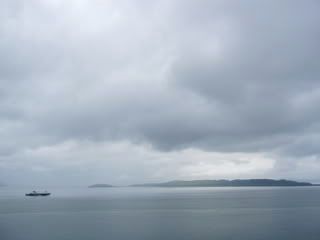
There are dozens of islands off the west coast of Scotland, and the ferries hold everything together. Here the Tiree ferry motors past the inshore island of Lismore, as seen from the top of Duart Castle on Mull. Lismore means 'great garden' in Gaelic, as there are over 300 species of plant and 160 species of birds crammed onto it's 12 mile by 1 mile length - along with 160 people. You'd never guess, looking at this view.
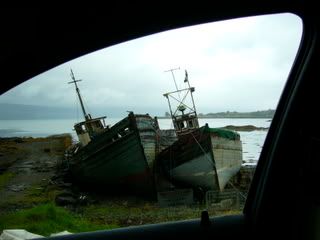
Some of the ships don't make it - here at Salen is an impromptu graveyard for old fishing boats. When you drive around Mull, every so often you come across something old and rusting, used as long as possible and then left to quietly fall apart.
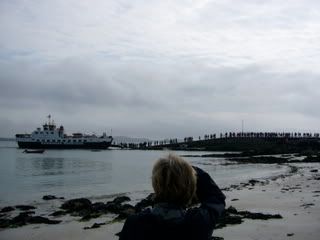
Daytrippers queue up to pile onboard the ferry from Iona to Fionnphort. Iona is one of those tiny quiet places that seem deserted apart from hordes of daytrippers mooching about looking at things. Apparently 125 people live there, but they must keep a low profile when the groups wander past their cottages. Iona's a nice place, a few small gardens, nice views, and the famous abbey and graveyard.
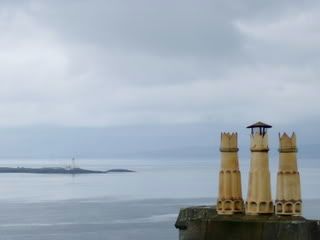
Back to Duart Castle, and the ornate chimneys on top of the roof that overlook the Sound of Mull. A few seconds after I took this, we saw a small group of dolphins making their way between the islands. Using the binoculars you could make them out, but they were moving so quickly it was hard to identify exactly what they were. From the battlements of the castle we could clearly hear the sounds of the blowholes as they moved to another feeding ground to try their luck.
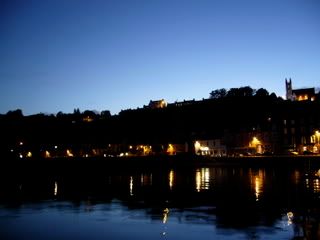
The main town on Mull is Tobermory, home to about 700 people. The name comes from the Gaelic Tobar Mhoire, meaning 'Mary's well', but to many younger people it should really be called Balamory. The children's TV series was filmed here, making use of the colourful cottages. Of course, real people live in these buildings, so many have signs outside them saying things like "Bernard the bricklayer is sleeping - don't wake him!" or "Dave the milkman is on his milkround, please don't knock on the door!" (or something, I've never actually seen it so I don't know their names).
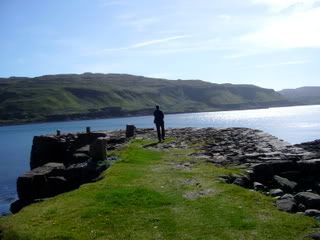
Time for some more Gaelic - cala ghearraidh, which translates as "the meadow beside the bay". Over time this was convoluted to 'Calgary', and a nearby castle given the same name. It's after that estate the Canadian city took it's name (one of the officers charged with building a fort in southern Alberta had stayed at Calgary Castle and liked the name). This is my brother walking on the old jetty at Calgary Bay - from which all 200 of the original inhabitants were forcibly removed to the New World to make way for sheep during the Highland Clearances. Nobody knows if any of them made it to southern Alberta, but if they did I bet they won't have appreciated the irony.